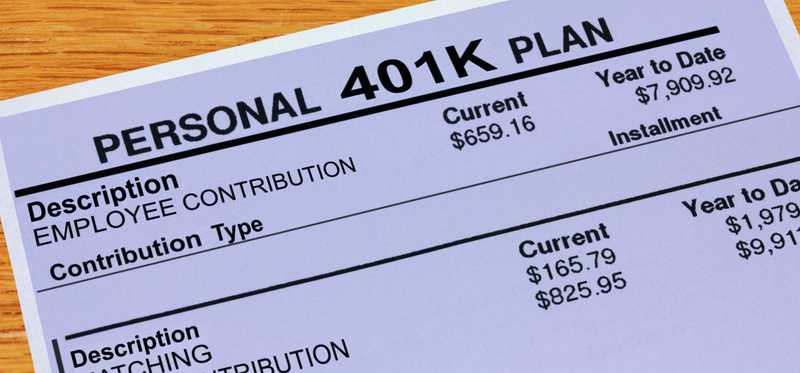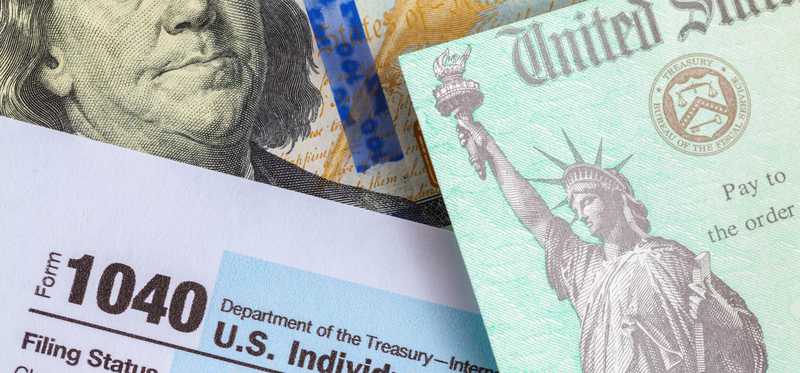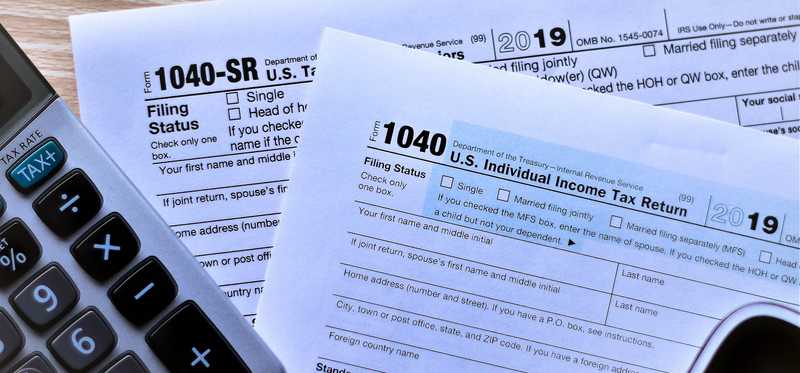14 Key Differences Between a 401(k) and a Roth IRA

14 Key Differences Between a 401(k) and a Roth IRA
Investors should know the rules of each
Both a 401(k) and a Roth IRA are accounts that can be used to save for retirement. But they work differently in terms of tax breaks, how you invest in them, and when and how you can withdraw your funds.
If you're making a decision about how to invest for your later years, make sure you understand these 14 key differences between a 401(k) and a Roth IRA so you can put your money in the best type of account for your needs.
5 Winning Stocks Under $49
We hear it over and over from investors, “I wish I had bought Amazon or Netflix when they were first recommended by the Motley Fool. I’d be sitting on a gold mine!” And it’s true. And while Amazon and Netflix have had a good run, we think these 5 other stocks are screaming buys. And you can buy them now for less than $49 a share! Simply click here to learn how to get your copy of “5 Growth Stocks Under $49” for FREE for a limited time only.
Previous
Next

1. Eligibility to open an account
A 401(k) is generally offered to workers by an employer. That means if your company doesn't offer a 401(k), you likely are not going to be able to contribute to this type of retirement savings plan.
A Roth IRA, on the other hand, can be opened by just about anyone. Regardless of whether your employer offers you a retirement savings account or not, you can make the decision to open your own Roth IRA to save for your future.
Previous
Next

2. Income limits for contributing
No matter how much money you earn, you are allowed to contribute to a 401(k) account. That's definitely not the case for a Roth.
There are strict income limits to be eligible to make contributions to a Roth IRA. If you exceed them, you can't just open this type of account and put money into it.
You can potentially take advantage of an option called a "backdoor IRA," which involves contributing to a traditional IRA and then doing a Roth conversion. However, this can be a lot more complicated.
Previous
Next

3. Contribution limits
There are annual limits on how much you can contribute to both a 401(k) and a Roth IRA. However, the contribution limits for a 401(k) are much higher.
In 2021, for example, you can contribute $19,500 to a 401(k) and an additional $6,500 if you are over 50 and eligible for catch-up contributions. That adds up to a $26,000 total maximum contribution.
By contrast, you are allowed to contribute a total of $6,000 to Roth and traditional IRAs in 2021 (that's an aggregate limit applicable to both account types). And the catch-up contribution amount is a total of $1,000, so the maximum Roth IRA contribution for those 50 or over would be $7,000.
Previous
Next

4. Availability of employer match
If you have access to a workplace 401(k), you may be able to get matching funds from your employer. This means that your employer would match a part of your contributions, such as 50% of the amount you put in up to 6% of your salary.
There is no employer contribution for a Roth IRA.
Because a 401(k) provides free money but a Roth IRA doesn't, you should always prioritize contributing enough to your 401(k) to get your full employer match. That way, you can take advantage of the free money your employer is willing to provide.
5 Winning Stocks Under $49
We hear it over and over from investors, “I wish I had bought Amazon or Netflix when they were first recommended by the Motley Fool. I’d be sitting on a gold mine!” And it’s true. And while Amazon and Netflix have had a good run, we think these 5 other stocks are screaming buys. And you can buy them now for less than $49 a share! Simply click here to learn how to get your copy of “5 Growth Stocks Under $49” for FREE for a limited time only.
Previous
Next

5. Choice of where to invest
Because employers open 401(k) accounts, you don't have a choice of what bank or brokerage firm to invest your money in. You simply have to invest with the 401(k) administrator that your company has chosen.
With a Roth IRA, you can open your account with virtually any brokerage firm or financial institution that offers this type of account. This gives you a lot more flexibility in what you do with your money.
Previous
Next

6. Type of investment options
Most 401(k) accounts provide very limited choices when it comes to investments. You may have a dozen or so target date funds or mutual funds or exchange-traded funds (ETFs) that you can invest in -- and that's it.
But since you can open a Roth IRA anywhere, you have a much broader choice of what you invest in.
Depending on the brokerage or financial institution where you hold your Roth IRA, you may be able to invest in many different kinds of assets including stocks, bonds, mutual funds, and more.
Previous
Next

7. Tax breaks for contributions
When you contribute to a 401(k), your contribution is made with pre-tax dollars. You get your tax savings in the year you make the contribution, and the money you invest in this account doesn't reduce your taxable income by as much.
Roth contributions are made with after-tax money. You do not get to claim a tax break when you deposit funds. But you get your tax savings later, as a senior.
If you expect to be in a lower tax bracket later in life, then a 401(k) could be a better option. But if you think your tax rate will go up in the future, then you may prefer a Roth.
Previous
Next

8. Methods of contributing
To contribute to a 401(k), you'll sign up with your plan administrator at work. When you sign up to contribute, money is taken directly out of your paycheck before you receive the check from your employer.
Roth IRA contributions don't come out of your paychecks automatically. You'll have to move money over into your account yourself. If you want to automate the process, you'll need to arrange this with your bank or brokerage firm.
5 Winning Stocks Under $49
We hear it over and over from investors, “I wish I had bought Amazon or Netflix when they were first recommended by the Motley Fool. I’d be sitting on a gold mine!” And it’s true. And while Amazon and Netflix have had a good run, we think these 5 other stocks are screaming buys. And you can buy them now for less than $49 a share! Simply click here to learn how to get your copy of “5 Growth Stocks Under $49” for FREE for a limited time only.
Previous
Next

9. Vesting of contributions
You are the only one contributing to your Roth IRA, so you don't have to worry about vesting.
But things are a little different with a 401(k).
Money you contribute to a 401(k) is always vested immediately and yours to keep. But employer contributions may come with a vesting schedule. That means you might have to stay at your job for a certain length of time in order to be eligible to keep this money.
Previous
Next

10. Ability to borrow against your account
In many cases, it is possible to borrow against a 401(k) and pay yourself back with interest.
While not all plans allow this, many do. And while there are risks to raiding your retirement account, a 401(k) loan can still be a good option when you need to borrow and don't want to pay interest to a creditor or can't qualify for a loan from a creditor.
You cannot borrow against a Roth IRA.
ALSO READ: 3 Reasons a 401(k) Loan Is Better Than an Early Withdrawal
Previous
Next

11. Options for penalty-free withdrawals
If you take money out of your 401(k) before 59 1/2, you are generally hit with a 10% early withdrawal penalty.
This penalty also applies to a Roth IRA, but only to gains from contributions. It's possible to make penalty-free withdrawals of money you contributed at any time, since the money that you deposited was after-tax money.
Previous
Next

12. Amount of time your account must be open before making penalty-free withdrawals
Once you hit 59 1/2, you can generally begin making penalty-free withdrawals from your 401(k) regardless of how long you have had your account open.
With a Roth IRA, an additional rule called the five-year rule applies. If you haven't had your account open for long enough, you could face penalties and taxes on distributions.
5 Winning Stocks Under $49
We hear it over and over from investors, “I wish I had bought Amazon or Netflix when they were first recommended by the Motley Fool. I’d be sitting on a gold mine!” And it’s true. And while Amazon and Netflix have had a good run, we think these 5 other stocks are screaming buys. And you can buy them now for less than $49 a share! Simply click here to learn how to get your copy of “5 Growth Stocks Under $49” for FREE for a limited time only.
Previous
Next

13. Taxation as a senior
When you take distributions from a 401(k) as a retiree, you'll be taxed at your ordinary income tax rate.
If you take money out of a Roth, however, you will not owe taxes on the distributions at all -- provided you've followed all the rules for your account.
The money you've withdrawn also won't count toward determining whether Social Security benefits can become taxable -- which can occur once your income crosses a certain threshold.
ALSO READ: 3 Ways to Avoid Taxes on Your Social Security Benefits
Previous
Next

14. Required minimum distribution rules
401(k) plans are subject to required minimum distribution (RMD) rules. These require you to begin withdrawing money from your 401(k) after you reach age 72. The specific amount varies based on your age, life expectancy, and account balance.
Roth IRAs do not have RMD rules during the account holder's lifetime, so the money can remain invested as long as you want.
Previous
Next

Should you choose a 401(k) or Roth IRA?
As you can see, there are huge differences between investing in a Roth IRA versus in a 401(k). The good news is, in most cases, you don't have to choose between them. You can invest in both so you have a mix of different retirement assets.
The best choice for you will depend on many factors including your retirement goals, income, and current and future tax brackets.
Now that you know the difference between the two account types, you can make an informed choice about how each one should factor into your retirement plans.
The Motley Fool has a disclosure policy.
Previous
Next
Invest Smarter with The Motley Fool
Join Over Half a Million Premium Members Receiving…
- New Stock Picks Each Month
- Detailed Analysis of Companies
- Model Portfolios
- Live Streaming During Market Hours
- And Much More
READ MORE
HOW THE MOTLEY FOOL CAN HELP YOU
-
Premium Investing Guidance
Market beating stocks from our award-winning service
-
The Daily Upside Newsletter
Investment news and high-quality insights delivered straight to your inbox
-
Get Started Investing
You can do it. Successful investing in just a few steps
-
Win at Retirement
Secrets and strategies for the post-work life you want.
-
Find a Broker
Find the right brokerage account for you.
-
Listen to our Podcasts
Hear our experts take on stocks, the market, and how to invest.
Premium Investing Services
Invest better with The Motley Fool. Get stock recommendations, portfolio guidance, and more from The Motley Fool's premium services.